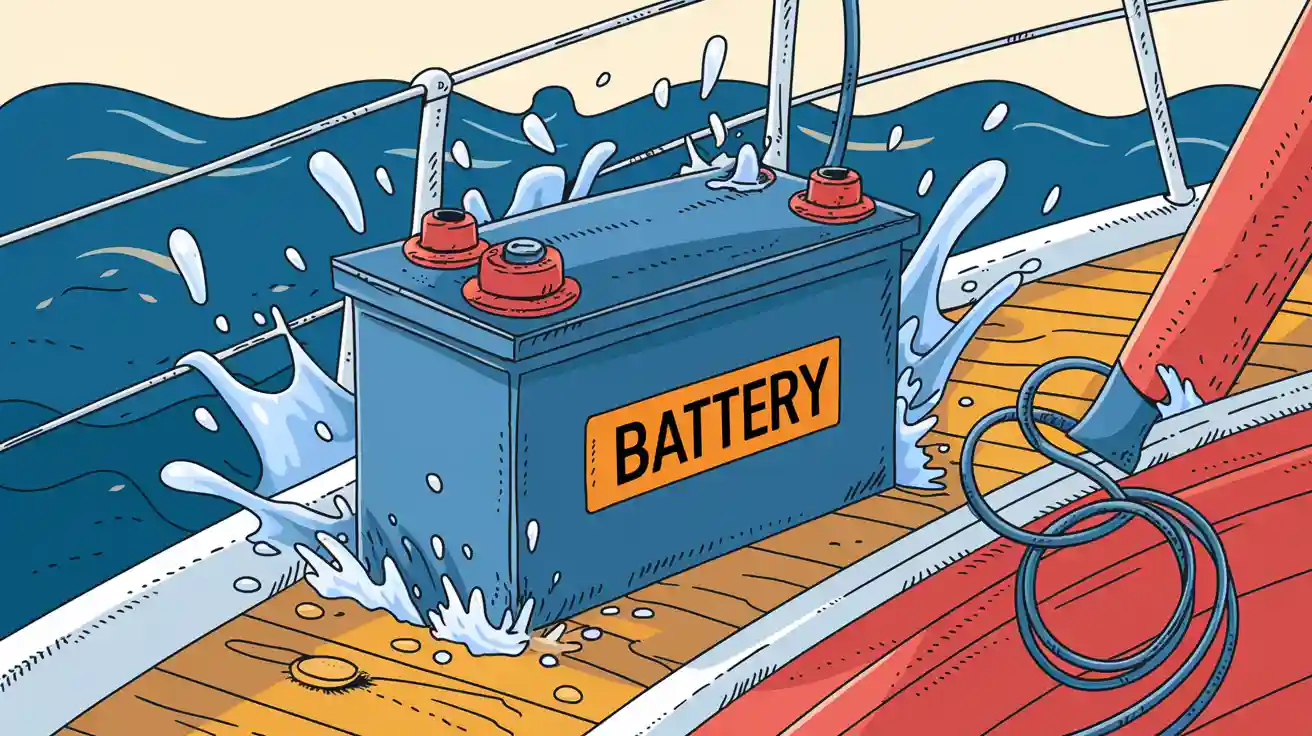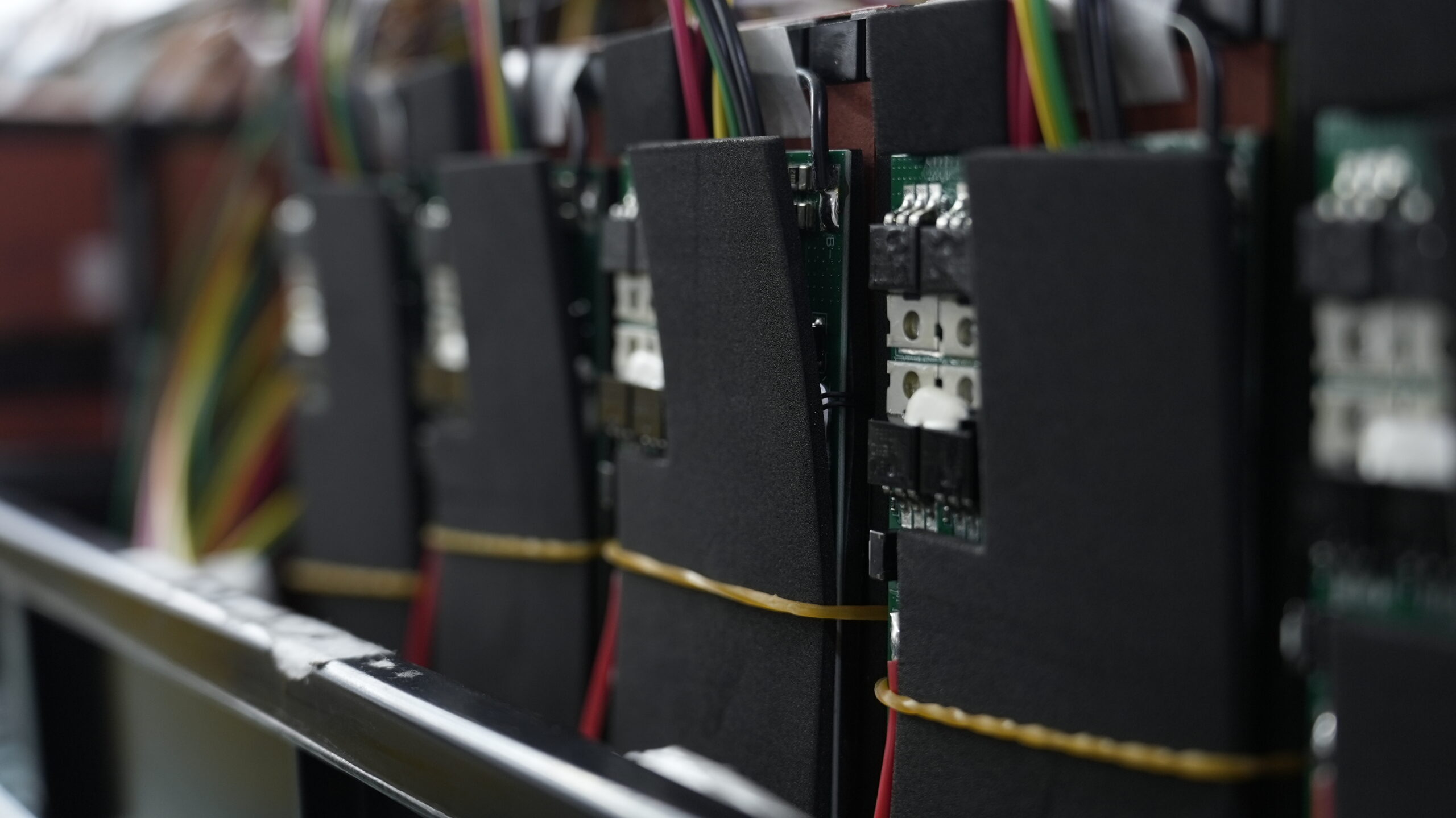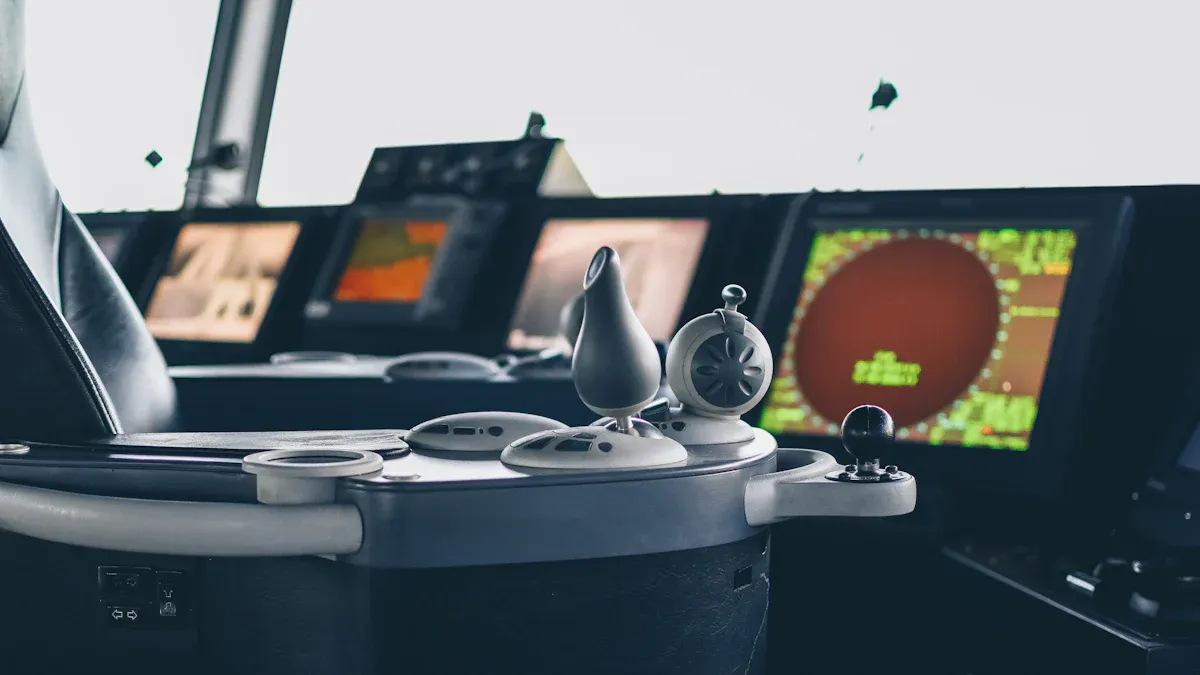
In marine applications, you should choose a battery enclosure with an IP rating of IP67 or higher for maximum protection. IP Ratings shield critical marine systems and waterproof battery packs from dust and moisture. When you install lithium battery packs on marine vessels, higher IP ratings help prevent overheating, corrosion, and short-circuiting.
IP67 or IP68 keeps your battery enclosure safe from water immersion and dust.
IP Ratings of 65 or higher increase operational lifespan for lithium batteries in harsh marine environments.
You get practical guidance here to select the right IP rating for your marine applications.
Key Takeaways
Choose battery enclosures with an IP rating of IP67 or higher for maximum protection against dust and water in marine environments.
IP67 and IP68 ratings provide robust defense against temporary and continuous water immersion, ensuring the safety of lithium battery packs.
Always verify the IP rating of your battery enclosure before installation to ensure compliance with marine safety standards.
Select materials and sealing technologies that resist corrosion and moisture to enhance the durability of your battery systems.
Assess the specific environmental hazards of your application to choose the right IP rating and improve operational safety.
Part1: Best IP Ratings
1.1 IP67 and IP68 for Marine Applications
You need robust protection standards for lithium battery enclosures in marine environments. IP67 and IP68 enclosures offer the highest levels of ingress protection against dust and water. These ratings shield your LiFePO4, NMC, LCO, LMO, LTO, solid-state, and lithium metal battery packs from harsh conditions. IP67 enclosures block all dust and withstand temporary water immersion. IP68 enclosures provide even greater defense, allowing continuous submersion in water under specific conditions.
IP67 enclosures keep your lithium batteries safe during accidental drops into water or exposure to heavy spray. IP68 enclosures protect your systems during prolonged submersion, such as when equipment remains underwater for extended periods.
You should select IP67 or IP68 enclosures for marine applications where water exposure is frequent. These protection standards help prevent corrosion, electrical faults, and performance loss in lithium battery packs. IP ratings at this level ensure your batteries operate reliably, even in unpredictable marine conditions.
IP Rating | Dust Protection | Water Protection | Typical Use Case |
|---|---|---|---|
IP67 | Total | Temporary immersion | Marine battery enclosures, deck equipment |
IP68 | Total | Continuous submersion | Submerged sensors, underwater battery packs |
1.2 Minimum IP Rating Standards
You must meet strict protection standards for lithium battery packs in marine environments. International marine safety standards require a minimum IP rating of IP67 for battery enclosures. This specific IP rating guarantees total dust protection and resistance to temporary water immersion. You cannot rely on IP 54 enclosures or IP 55 enclosures for marine use, as they do not provide adequate defense against water ingress.
IP 65 enclosures offer basic protection against water jets and dust, but you should only use them in areas with minimal water exposure. IP 65 enclosures do not withstand submersion or heavy spray, which are common in marine settings. You should upgrade to IP67 enclosures or higher for critical systems exposed to water, salt spray, or direct contact with waves.
IP 55 enclosures protect against limited dust and water jets, but they do not meet marine protection standards.
IP 65 enclosures resist water jets, but they fail under submersion.
IP67 enclosures and IP68 enclosures meet the highest protection standards for lithium battery packs in marine applications.
Tip: Always verify the IP rating of your battery enclosure before installation. You should check manufacturer documentation and certification to ensure compliance with marine safety standards.
You improve operational safety and extend battery life by choosing enclosures with the right IP ratings. You avoid costly downtime and equipment failure caused by water ingress or dust contamination.
Part2: IP Rating System

2.1 Two-Digit Meaning
You often see IP ratings on marine battery enclosures, but what do those two digits mean? The IP rating system uses two numbers to show how well an enclosure protects electrical systems from solids and liquids. The first digit tells you how much protection the enclosure gives against solid objects like dust or debris. The second digit shows how well the enclosure keeps out water and other liquids.
Here is a quick overview:
First Digit: Protection against solid objects (dust, sand, or other particles).
Second Digit: Protection against liquids (water, spray, or immersion).
This system helps you choose the right level of ingress protection for your lithium battery packs in marine environments.
Digit | Protection Against |
|---|---|
0 | No protection |
1 | Solid objects >50mm |
2 | Solid objects >12.5mm |
3 | Solid objects >2.5mm |
4 | Solid objects >1.0mm |
5 | Dust protection |
6 | Dust-tight |
7 | Immersion up to 1m |
8 | Immersion beyond 1m |
2.2 Solids Protection
The first digit in the IP rating tells you how well the enclosure blocks solid objects. For marine lithium battery packs, you want a high level of protection. Dust and debris can damage electrical contacts and reduce the lifespan of your systems. An enclosure with a first digit of 5 or 6 gives you strong defense against dust. This level of protection keeps your electrical equipment running smoothly, even in harsh marine conditions.
Note: Dust-tight enclosures (first digit 6) are best for marine battery packs. They prevent even the smallest particles from entering and causing electrical faults.
2.3 Liquids Protection
The second digit in the IP rating is critical for marine applications. Water exposure is common on vessels, so you need strong liquids protection for your electrical enclosures. The second digit shows how well the enclosure resists water, from light splashes to full immersion. In marine environments, sudden waves or heavy rain can quickly flood equipment. Saltwater also increases the risk of corrosion and electrical failure.
The second digit of the IP rating measures protection against water exposure.
Marine electrical systems face splashes, spray, and possible immersion.
High liquids protection prevents corrosion and keeps your lithium battery packs safe and reliable.
When you select enclosures for marine use, always check the second digit. A higher number means better protection against water and a longer lifespan for your electrical systems.
Part3: Comparing IP Ratings
3.1 IP65 vs IP66 vs IP67 vs IP68
When you select waterproof components for lithium battery packs, you need to understand the differences between common IP ratings. Each rating offers a unique level of protection against dust and water. The table below summarizes the protection standards for IP65, IP66, IP67, and IP68 enclosures:
IP Rating | Solid Protection | Liquid Protection | Typical Use Cases |
|---|---|---|---|
IP65 | Dust-proof | Protected from splashes or low-pressure jets | General outdoor use, basic waterproof components |
IP66 | Dust-proof | Protected from strong water jets | Industrial settings, heavy spray zones, ip 66 enclosures |
IP67 | Dust-proof | Protected from temporary immersion in water (up to 1m for 30 mins) | Marine applications, outdoor equipment, flood-prone areas |
IP68 | Dust-proof | Protected from continuous immersion in water under more severe conditions | Submerged sensors, underwater battery packs |
You see that IP65 and IP66 enclosures protect against dust and water jets, but only IP67 and IP68 enclosures provide defense against submersion. For marine applications, you should choose IP67 or higher to ensure your lithium battery packs remain safe during accidental drops or flooding.
Tip: Always match the protection standards of your enclosure to the risks in your operating environment. Marine settings demand higher water resistance than most land-based installations.
3.2 Relevance for Waterproof Battery Pack
You need the right IP rating to keep your waterproof battery pack reliable in harsh environments. In marine systems, lithium battery packs face constant threats from water, salt, and dust. IP67 is the most common choice for waterproof battery packs on commercial vessels. This rating gives you full dust protection and shields your electrical equipment from temporary submersion.
You also find IP67 and IP68 enclosures in industries like Medical, Robotics, Security System, Infrastructure, Consumer Electronics, and Industrial. These sectors rely on waterproof components to protect lithium chemistries such as LiFePO4, NMC, LCO, LMO, LTO, solid-state, and lithium metal. When you use IP67 or IP68, you reduce the risk of electrical faults and extend the life of your systems.
Use IP65 for outdoor equipment with minimal water exposure.
Choose IP66 for industrial sites with strong water jets.
Select IP67 for marine environments, flood-prone areas, and rugged outdoor use.
Opt for IP68 when your waterproof battery pack may face continuous submersion.
You ensure operational safety and compliance by selecting the right protection standards for your lithium battery packs. This approach keeps your electrical systems running smoothly, even in the toughest marine conditions.
Part4: Choosing for Marine Applications

4.1 Environmental Hazards
You face unique environmental hazards when you deploy lithium battery packs in marine applications. Saltwater, humidity, and moisture constantly threaten your electrical systems. Saltwater exposure leads to corrosion of battery terminals and metallic components, reducing electrical conductivity. Moisture can cause short circuits, overheating, and harmful chemical reactions inside the battery enclosure. These risks shorten the lifespan of lithium chemistries such as LiFePO4, NMC, LCO, LMO, LTO, solid-state, and lithium metal.
Impact Type | Description |
|---|---|
Corrosion | Salt water corrodes battery terminals and metallic components, reducing electrical conductivity. |
Short Circuits | Salt water can cause short circuits if it enters the battery casing, leading to overheating. |
Chemical Reactions | Salt water may trigger harmful chemical reactions within the battery that accelerate degradation. |
Reduced Lifespan | Prolonged exposure significantly shortens a lithium battery’s lifespan due to internal damage. |
Tip: You should always assess the risk of water exposure, humidity, and submersion before selecting an enclosure for your application.
4.2 Application Requirements
You must match the IP ratings of your battery enclosure to the specific needs of your application. Consider the location of your systems, the likelihood of direct water contact, and the frequency of maintenance. For marine applications, choose enclosures that provide robust environmental protection against moisture and water. You should also factor in compliance with industry standards and cost constraints.
Identify areas with high risk of water spray or submersion.
Select enclosures with IP67 or IP68 for critical electrical systems.
Review regulatory requirements for marine safety and environmental protection.
4.3 Material and Sealing
You improve environmental protection by choosing the right materials and sealing technologies. Use corrosion-resistant metals or high-grade polymers for battery enclosures. Ensure that all seals and gaskets withstand moisture and saltwater. You should inspect the enclosure design for tight seals around cable entries and connectors.
Choose materials that resist corrosion and chemical reactions.
Use advanced sealing methods to prevent water ingress.
Regularly inspect seals and replace worn components.
4.4 Verifying IP Rating
You must verify the IP rating of your enclosure before installation. Request certification documents from your supplier. Test the enclosure under real-world conditions to confirm environmental protection. You should check for compliance with marine standards and ensure the enclosure meets the demands of your application.
Note: Reliable IP ratings guarantee long-term performance and safety for lithium battery packs in marine environments.
Selecting the right IP rating protects your waterproof battery pack from dust and water in marine environments. You should focus on the second digit of the rating, which shows how well the enclosure resists water. Many believe IP65 is fully waterproof, but only IP67 or higher can handle submersion.
IP Rating Component | Description | Importance in Marine Environments |
|---|---|---|
First Digit | Protection from solids | Keeps dust and debris out |
Second Digit | Protection from moisture | Shields against water exposure |
You improve safety and reliability by matching the rating to your needs and consulting with experts for custom solutions.
FAQ
What factors should you consider in custom battery pack design for marine environments?
You should evaluate water exposure, salt spray, and vibration. Battery pack design must use corrosion-resistant materials and robust sealing. You need to select the right IP rating for your custom lithium battery packs, such as LiFePO4 or NMC, to ensure long-term reliability.
How does IP rating affect battery pack design for lithium chemistries?
IP rating determines how well your battery pack design protects against dust and water. For chemistries like LCO, LMO, or LTO, you need enclosures that prevent moisture and debris from entering. This protection extends cycle life and maintains energy density.
Why is IP67 preferred for battery pack design in marine lithium systems?
IP67 ensures your battery pack design remains dust-tight and resists temporary water immersion. This level of protection is critical for lithium metal and solid-state batteries. You reduce the risk of corrosion and electrical faults in harsh marine conditions.
Can you use the same battery pack design for all lithium chemistries in marine settings?
You cannot use a single battery pack design for every chemistry. Each lithium chemistry, such as NMC or LiFePO4, has unique requirements for platform voltage, energy density, and cycle life. You must tailor the enclosure and protection level for each application.
How do you verify the IP rating in your battery pack design process?
You should request certification from your supplier and test the enclosure under real-world marine conditions. Reliable battery pack design includes documented IP ratings and compliance with marine safety standards. This step ensures your lithium battery packs meet operational demands.






